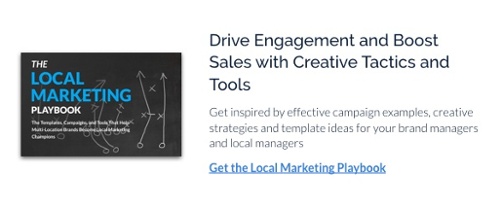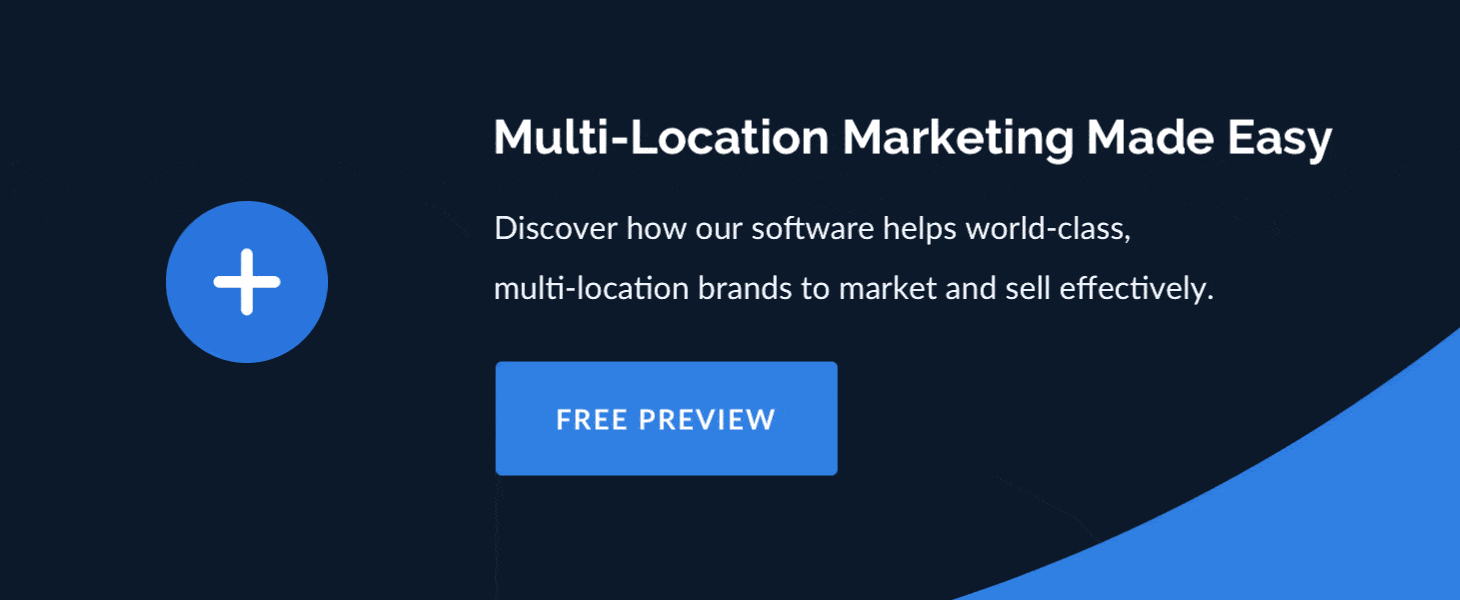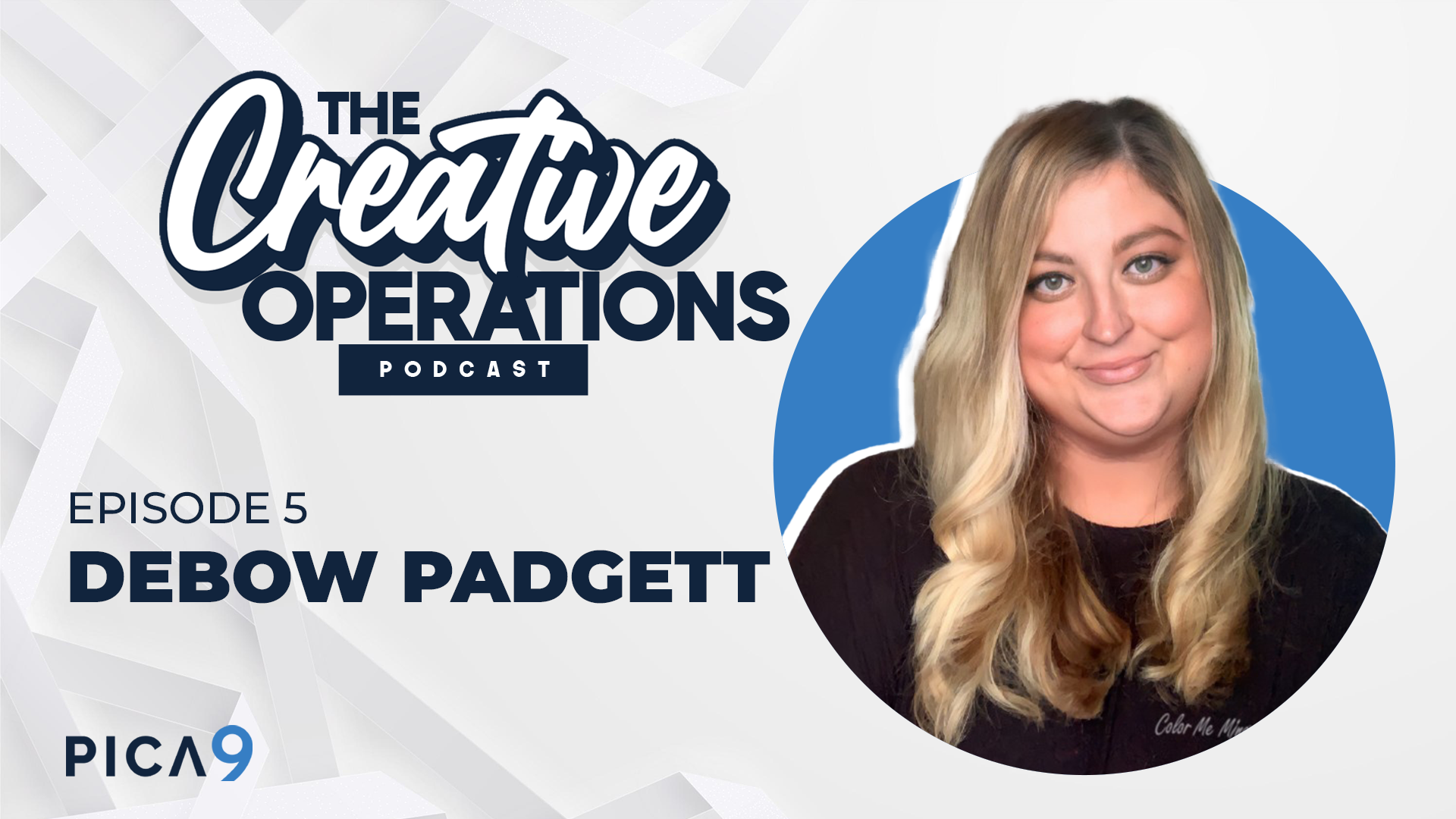Kevin: Welcome everybody to this episode of The Creative Operations Podcast. I'm your host Kevin Groome and I'm really excited about today's episode because we're going to have the opportunity to dive into the creative side of the creative operations problem. Our guest today is Karen Gress. Karen has a unique background. It has a lot to do with that old Joanie Mitchell song, "Seeing Things From Both Sides Now", because Karen has seen the creative operations problem, both from the client side and from the vendor side. Karen, tell us a little bit more about that.
Karen: Sure. I currently work for Pica9, in the capacity of the professional services lead on their team. I was introduced to CampaignDrive as a product back in 2012. So I've been with the company in several different capacities for over 10 years now when we started by pursuing a solution for a software as a service for the marketing and in-house creative team that I was currently part of. So in 2012, we brought CampaignDrive into our toolkit and I used it at Wellbiz brands until about 2019, when I had the opportunity to join the Pica9 team as an internal resource. I've been with the company for about three years and it gives me a really good perspective because, as Kevin's mentioned, I've been on both sides of this equation. I've been the person needing the solution and the person providing the solution. It's been really exciting to be able to be on the problem solving side to help clients with their creative workflow processes.
Kevin: And we've pleased have Karen, as well, to do that. The notion of looking at the problem of creative operations from that vendor side. So, you look at lots of different problems, from one industry to another, from financial services to restaurants and beyond. When you think about all those different designers and studios that you engage with all the time, tell me a little bit about how they see templating and how you see templating and how you guys come to a common understanding of what a template is really valuable for and when it should be used and maybe when it shouldn't?
Karen: A template is something that is a tool, right? So you wanna make the tool, the easiest and most efficient possible. It's a tool for marketers to get their marketing campaigns to the public. It's a tool for administrators to lessen their one-off workload, right? It's something that can be used over and over again, so it lessens the manual labor for administrators. It streamlines the campaign to market for marketers and, you know, what we wanna do is bring all of this, you know, kind of together, right? So it takes both the marketer and the production department, if you will, or the production designer, working together to decide how that word gets to the end user.
The thing I've found about templates very often with folks is, and you mentioned one offs, which I believe is where very often the need for a templating system begins to arise.
Kevin: So let's just dive into that a little bit. When you see a repetitive task in the studio, when you see the same job needing to be done in slightly different versions again and again, do you have a sense of the break points when it's time to really start thinking about, is it 2 repetitions?
Is it 20? Do you measure it by the complexity of the job? How do you go about deciding when a template should be introduced to a workflow?
Karen: I would say if you have a template workflow and if a piece of creative is going to be used one time, for a corporate office entry hall poster, that's not a template, right? That's a design that's created for a single purpose for a single time. But beyond that, if this piece of creative is intended to be used beyond the accessibility of the immediate designer, like giving a single design to the one person that it's intended for. As soon as that becomes "I have to be able to have this piece of creative accessible when you are not around, or I need to be able to pass it to one or two or four or other people", there are very few downsides to making something a template, if you have a template workflow accessible to you.
Kevin: That's right. There is one thing that I thought of in regards to a template and other benefits to templating, which for a marketer and for a brand steward is the consistency. No matter how consistent a human can be, if they're making one-offs, oftentimes, or it's separated amongst two individuals or more individuals, inconsistencies can arise and begin to creep in right?

Templates help with brand consistency, as well. So it's not just about getting work done faster. It's getting work done better, where you reduce the inconsistencies that can arise from multiple iterations.
I used to work in the advertising business, within a Manhattan agency that had about 30 studio artists and as time went by, each individual sort of had their own way of using creative tools that began to reveal itself in the designs. I think those guys are so talented that they actually address the issues of brand consistency almost by second nature. But even with those little details, you can see how, and I thought the phrase you used, inconsistencies can "creep in". I think that's a perfect way of describing how a system, a machine can help eliminate those sorts of in inconsistencies and make life a lot easier for everybody down the road. So that's great, but you know, it brings up another point I wanted to talk about because you're creative and that was a question that I wanted to bring up around the creative's attitude toward templates. When we first started, there was kind of a resistance to templates as if it would somehow take creativity out of the process. I wanted to just get your sort of thoughts on that. Did you feel that as you first started working with templating workflows or did you just welcome the labor savings and sort of the release from one-off mechanical demands that it brought?
Karen: I don't resist it at all. I personally in my own work and from my own creative perspective, love templating. If I can set something up perfectly one time and I can go back and use that perfect setup again and again, and again... I will do it all day long because it helps me.
I can focus and concentrate and get it the way I want it to start with and then I can release myself from that intense concentration because I know it's correct. I know it's right and I don't have to rethink it every time I go in to use that piece of material. And whether it's a template in a system like CampaignDrive by Pica9 or it's in a master template I've set up in illustrator or Photoshop. I'll go back and use those. I have little master templates, squirreled away for various things that I go and address over and over again. Cause it's not just in a tool like CampaignDrive. I use it in other areas as well. Any place I can templatize, I do.
Kevin: It's a great point. So, let me dive a little bit deeper on one of the issues that you and I have seen arise in recent years and that has to do with fonts. When you work up a design, a one off design, let's say... The notion of transmitting the font has some issues that are associated with it. You know, classic issues of sharing fonts or distributing fonts to vendors, to printers, etc.
You also have the issue of ensuring users have access to those font and how do they create their own brand consistent materials if they don't have access to font? So I wanted to have you dive a little bit into how you think the approach to and use of brand typography and proper font usage has been influenced by all these templating systems, CampaignDrive, and others, over the past decade or so? How do you think that's changed?
Karen: I know that font attitude has changed and I think rightfully so. A dozen years or so ago, it was sort of like, "here's a font". Okay. They weren't treated as proprietary designs as much as they are now.
Kevin: Yeah. Right. Fonts used to just be sort of passed along, passed from, from one person to another or one machine to another. I think from a brand steward point of view, there's always the desire to use a brand font. Right? And if you're templatizing, you don't want your users to use non-brand fonts. And so in the past, it's just, here's the font install it, use it. And that's sort of the not correct usage of font creative licenses. So I think that they there's been a lot of steps in the right direction, which is limiting just free transfer of fonts, but that does then bring up the issue of, okay, well what do I do when I can't hand this font off to someone else. Right? And that's where a templatizing system, such as a platform, such as CampaignDrive, is very valuable because the end user isn't required to have the font.
They can rest assured that they're gonna make this template and it's gonna have a font that's available only in the platform. So they can use a brand approved font and not have to worry about using it incorrectly. So, those types of systems really do help in that way. One thing though that is always troubling is if you're handing a piece of a template or a piece of creative off to someone who doesn't really know the brand standards and how to use a font. Do you really want them having the font anyway, because are they really gonna understand or know what to do or not to do with those fonts? No. Where to use it? Where am I using display? Where am I using body copy fonts? Right? All those decisions, which are second nature to designers are often wild discoveries to folks who haven't been trained in this profession of yours.
Kevin: So all of those are really good points. I also wanted to amplify the evolution of attitudes about font licensing. I agree 100%. Even in the 2000's, but for sure, even earlier than that, as we were really starting to make the transition into a fully digital workflow in design. So the notion that a typeface font is a piece of intellectual property that deserves the same protections that any kind of software gets. That's been a discovery for folks obvious to many people, but a discovery to many, many more. And the notion that you need to find a distribution strategy for your fonts without running into licensing or legal restraints or problems, a huge, huge issue. I think a huge benefit, as you were saying, platforms like CampaignDrive, it doesn't occur to you when you're first thinking about it, but when you look in hindsight and realize, you know, that you've got hundred fonts, that you're using across 200 or 300 different templates and that you haven't deployed those, not to a vendor, not a franchisee, you've kept them all safe, under lock and key. That's a huge peace of mind, I think is becoming more and more evident.
And you know, one other point is that Google has done the world, I think of great service. Google fonts offer enough substitutions so that if you don't have the budget to buy a font, there's still no reason to go and inappropriately, you know, violate the license on it. You can usually find a Google font that's a pretty good substitution for what you're doing in the brand.
Would you agree with that?
Karen: Yes, I would. And this is something that brings up an, an interesting point when I was working, you know, with agencies, when I was on the client side and that is, I think it's very important for marketing teams and brand designers of any company to work with their agencies and talk with their creative agencies, whether they're internal or external about font usage, and especially in regards to workflows and distributing creative amongst, you know, stakeholders because it's very easy for a creative agency to watch me pull this font outta my hat. I'm gonna use this font. And, it's not, I don't wanna say irresponsible, but they don't take into consideration the cost of the font, the ability for the font to be distributed or used or how it's going to be used. I think the font discussion with agencies is super important and it's clear, as a client, you can say, "Hey, we're using a creative operations workflow that involves X, Y, and Z, so whatever font you design for us, in this design needs to be able to be used in those types of workflows, so please don't even show us other options, start from that premise and go find fonts that will work with our needs". And I don't know that a lot of teams understand that and certainly agencies don't, but if you can have that conversation with your creative agency up front, it can save a lot of heartache down the road.
Kevin: The point, I think in two cases now in our conversation just today, you've really made and created an emphasis around creative operations issues aren't just for the tail end of the creative process, they should be thought about all the way through. So even when you're in illustrator, even when you're in Photoshop, using templatizing concepts for consistency and efficiency, those are things to think about in the moment that you're creating. It's not like creative operations is the left side of the brain and you know, the comps are the right side of the brain, the creative side of the brain. The two things really do need to be melded together, right from the beginning and this notion that you brought up, I couldn't agree more that an agency and a client should be talking about budget and the workflow implications of these creative decisions.
That's a wonderful conversation to have and I would guess it doesn't happen nearly often enough, but it's starting to happen more. I actually think that, you in your role here at Pica9 and me too, I get the opportunity. Sometimes we're starting to be a catalyst for those kinds of conversations, especially when agencies are coming in and finding the system is already in place, so that now that's the universe in which they're gonna operate. I think it's a really, really good point.
So listen, we're coming close to time and I wanna be sensitive of time, but I wanted to, sort of open the mic for you, just to talk about, because you've seen things from both sides from the client side, from the design side, from the software side, what do you think, you know, what are the top issues for you and creative trends these days?
What would you advise designers to be thinking about as the world keeps on changing underneath their feet?
Karen: I would say that it's all about the workflow, right? It's not looking at designs. It's that collaboration with your agencies, right from the start. How is this creative gonna be used?
How is it gonna be deployed? How is it going to be ultimately handled right because the way that information is deployed there, the tools that are available, they're changing every day. And so it is sort of the whole... How do we work together? As much as possible, we want everybody in the pipeline to understand, maybe not A to Z, but certainly their section before and after, right?
I'm not just this production designer sitting in a cubicle making ads. Right. What happens before my work? What happens after my work? and to understand the pieces that are applicable to everyone, because I was very fortunate in my collaboration with our agencies, that I pretty much, as an internal agency for where I worked, I could work with our agency of record to even set up files. This is the way we'd like to have you set up files. here is our master set of templates. Please use these logos because down the line when these are templatized or used in X, Y, or Z, this is the format and now we wont have to change them. Right? So I was able to collaborate very closely. As much as you can do that and set things up so they don't have to be repeated or you understand, "Hey, this is ultimately going to be going into a Facebook ad or, or whatever it is". What is the whole process? What's the life cycle of what we're trying to do? The message we're trying to send and the marketing campaign we're trying to produce?
Kevin: That's a lot more than what's aesthetically pleasing, that's for sure. And in some ways, Karen, I think you've guided us toward a perspective that both the agency of record the external agencies and the in-house resources need to take. It's one perspective that has as much software in, as much architecture in it as it has that creativity component.
I think it's a fascinating evolution that we're going through. We've been watching at you and I for decades now and in my view, anyway, as it gathers steam, the business, the profession is becoming more fun, less onerous, but also requiring a lot more forethought and planning than sitting down at a design station and having a wild idea. I still think that's a great part in the heart of everything that you know happens. But, knowing that it's embedded in a larger, as you said, workflow perspective, lifecycle perspective, I think it's a great point.
So, let me bring it to a close there as we hit the, the 20 minute mark say, thanks for taking the time. We will be visiting with you again on The Creative Operations Podcast and thanks to everybody out there for listening. We'll see you next time.




